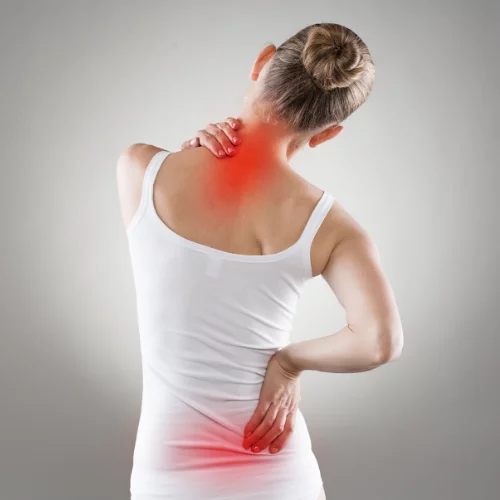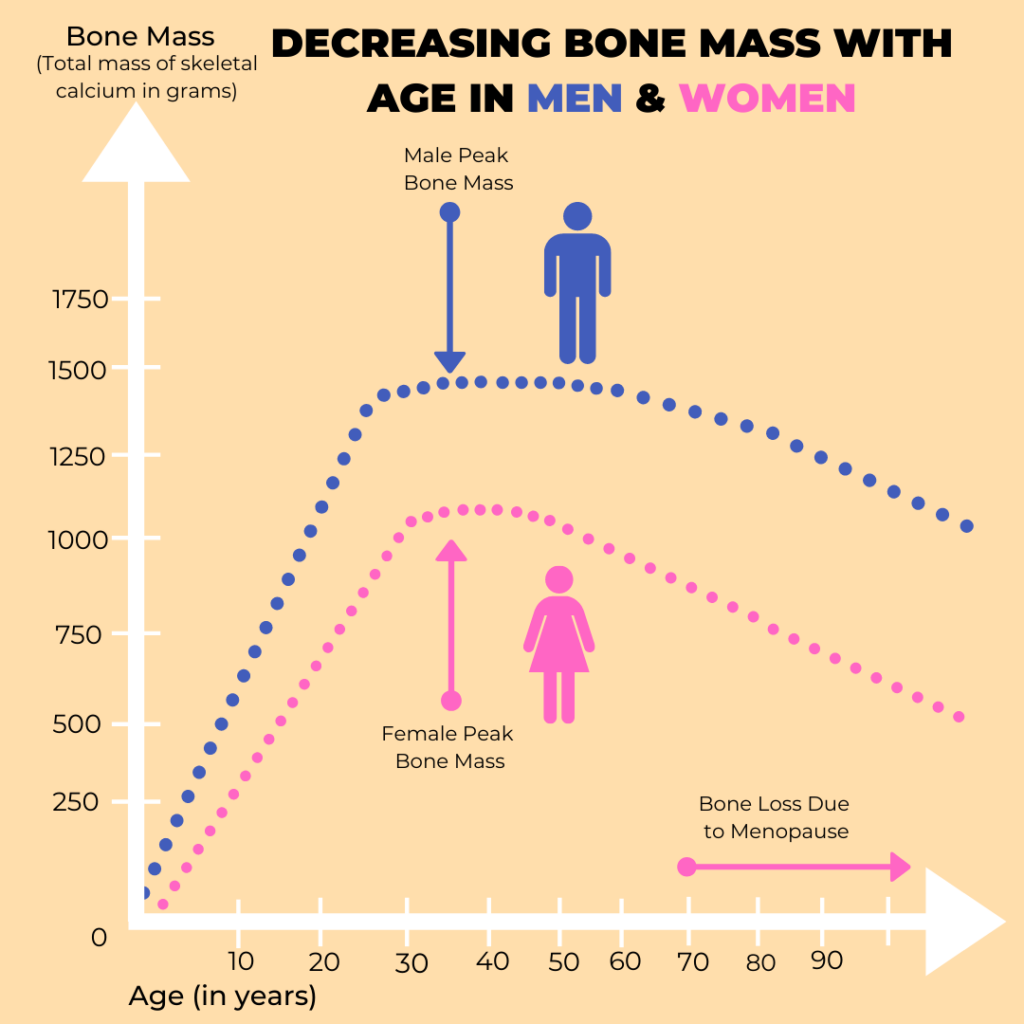
Our bones are made of living tissue that is constantly being depleted and regenerated over the course of our lives. We reach peak bone density in our twenties before regeneration slows as we approach middle age, leading to a loss of bone mass as we get older. Osteoporosis (literally, “porous bones”) is a disease that reduces bone mass, resulting in a weakened skeletal system that is unusually vulnerable to fractures and other injuries. Some bone loss is common among older adults, but there are steps that can be taken to help maintain a strong skeleton and prevent osteoporosis from causing pain and serious injuries.
Risk Factors of Osteoporosis
All adults begin to experience some loss of bone density as they get older, and there are some risk factors that are beyond our control, such as gender, family history, and body type. Women tend to begin losing bone density earlier in life than men. While osteoporosis generally doesn’t begin to affect men around the age of 70, women are at a higher risk around the age of 50. This is because menopause, experienced by women around middle age, results in a loss of estrogen, which protects against bone loss.

Body type is also an important risk factor to consider. People with small, thin frames have less bone tissue to begin with. This makes petite and willowy types more susceptible to serious bone loss than people of stouter build. If one of your parents has broken a hip in older age, you may have a higher hereditary risk of serious bone loss yourself. Injury history plays a role too. If you have broken a bone before in a relatively minor accident, it may be a sign that you are vulnerable to osteoporosis.
Screening for Bone Density
Often, osteoporosis displays no visible symptoms before the first broken bone. Medical Offices of Manhattan offers bone-density tests as a service to identify symptoms early on. Using a type of X-ray, we scan the bones to determine your injury risk and prescribe a treatment plan. If any of the primary risk factors apply to you, you should schedule a bone density scan every few years. Bone density testing is highly recommended for women after menopause, particularly those over the age of 65 or those who have suffered a broken bone from a minor accident.
Osteoporosis Prevention
While we cannot control the genetic factors that contribute to osteoporosis, there are lifestyle choices we can make to reduce our risk. Weight-bearing exercises like walking, jogging, and climbing stairs help to strengthen bones and muscles. Exercising at least every other day increases peak bone mass in young people and can slow or even halt bone loss in older adults. Exercises like planks and yoga can also improve stability and balance.
Taking everyday precautions to avoid falls helps prevent bone breaks that result from osteoporosis. These include using handrails, picking up clutter in your living space, and staying away from slipping hazards like ice patches in the wintertime.
Osteoporosis And Your Diet
What you put in your body can also make a major impact on your bone density and the rate of bone loss. A diet high in calcium, found in dairy products like milk, helps strengthen bones. If you are lactose intolerant, calcium can also be found in healthy sources like salmon and leafy greens like spinach and kale. There are also calcium supplements available for those having trouble getting the required amount. Doctors recommend that people over age 50 consume between 1,200 and 1,500 mg of daily calcium.
Vitamin D is important as well, as it helps your body with absorbing the necessary calcium. Sunlight helps the body create vitamin D, so just spending around half an hour in the sun each day is enough for most people. During winter months, when the days are shorter and colder, it may be difficult to get enough vitamin D from sunlight alone. Other good sources of this vitamin include eggs and fatty fish like salmon.
Other Lifestyle Risk Factors of Osteoporosis
Some vices can also increase the rate of bone loss. Among their many negative health effects, smoking cigarettes impedes your body’s production of hormones which help defend against serious bone loss. If you smoke, look for resources to help you quit. Excessive alcohol consumption can weaken the bones and raise your risk of fractures.
Medical Treatments of Osteoporosis
There are a number of medical treatments available for people at the highest risk of serious bone loss that is likely to lead to a serious injury. These can include vitamin D and calcium supplements, as well as a variety of prescription medications that aid in building bone mass.
Hormone Therapy
Sex hormones are thought to help with maintaining bone density over time in both women and men. Women tend to see a major decrease in estrogen at menopause. This type of sudden drop in sex hormone production is much less likely to occur in men, but it can be caused by conditions such as hypogonadism as well as lifestyle factors like smoking, alcohol abuse, and side effects from other medications.
Estrogen therapy for women and testosterone replacement therapy for men may both help with stabilizing hormone levels and preventing serious bone loss. Beginning one of these treatments should always be discussed with your doctor to determine your risk of side effects like heart attacks or blood clots. Typically, hormone therapy is only prescribed for patients who are at particularly high risk, such as women who undergo early menopause.
Osteoporosis Treatment at Manhattan Offices of Medicine
If you believe that you may be at risk of osteoporosis due to early menopause, suspicious bone fractures, or any of the other above risk factors, don’t hesitate to schedule an appointment with one of our expert physicians. A bone density test can help determine whether further treatment is necessary. Often we can help patients prevent further symptoms through some straightforward lifestyle changes, but we will help to determine the best option for you as an individual.



